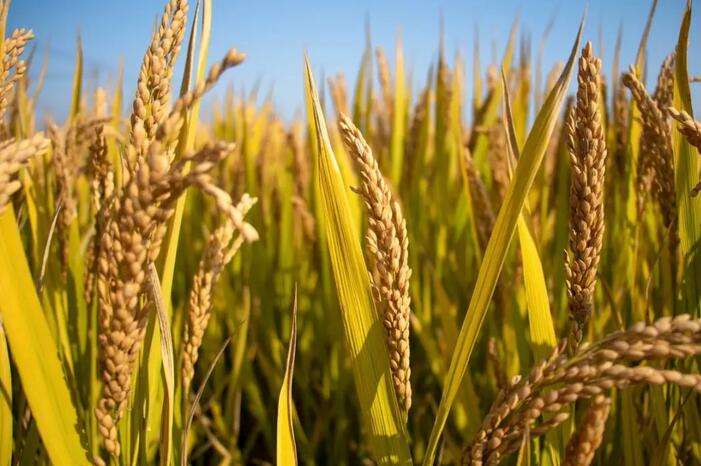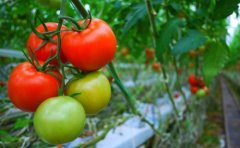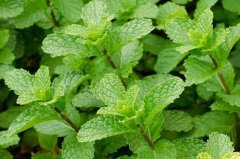According to the introduction of rice variety Taibian 17, what are the shortcomings and weaknesses of the characteristics of Taimian 17?
Rice is one of our staple foods, which is very important for the cultivation and cultivation of new varieties of rice. Do you know the rice variety No. 17?
Variety characteristics
I. General agronomic characters
Taibian 17 is a mid-late maturing variety, with 127days in the first stage and 1122days in the second stage, similar to Tainong 67, which is the most widely cultivated at present; Lemma tip is yellowish, millet color is yellowish, awnless, grain type is medium; plant high school, etc., average 104.2 cm in the first stage, 102.4 cm in the second stage, 16.9 ears in the first stage and 14.0 ears in the second stage. The average grain number per panicle was 91.6 grains in the first stage, 100.0 grains in the second stage, 23.7g in the first stage and 24.3g in the second stage, and all the above characters were similar to those of Tainong 67. The fertility rate was 78.2% in the first stage and 77.2% in the second stage.
Second, excellent characteristics
1. The rice quality is good and the taste is good: Taicanyu 17 has good grain appearance, good transparency, little whiteness in heart and abdomen, and good taste. According to the test results of Taichung Agricultural improvement Farm, the transparency of white rice is grade 3, heart, belly and back white are all grade 0, and the performance is quite stable during the year. The brown rice rate is 81.94% in the first stage and 82.17% in the second stage, and the complete white rice rate is 62.04% in the first stage and 71.24% in the second stage. Compared with the control variety Taibian 9 in 1985 and 1986, the taste performance of the rice was the same (grade B). The rice was white and bright, moderate viscosity and elastic.
two。 Resistance to rice fever: Taiwan stem 17 was tested in two unified disease nurseries in Chiayi and Guanshan in 1983,85 and 1986. The results showed that the resistance to leaf rice fever was average, and the panicle rice fever was moderately resistant, and the performance was stable between years and regions. Only in view of the complexity of the occurrence of rice fever, field cultivation should pay attention to the disease at any time, so as to control it in time and reduce the loss.
3. The response of this variety to nitrogen fertilizer was good: according to the results measured in this field in 1985 and 1986, the rice yield of either the first stage or the second stage increased significantly with the increase of nitrogen fertilizer, and reached the highest yield from 200kg N/ha to the highest level. Although the plant height increased gradually with the increase of nitrogen fertilizer, its lodging remained good until 200kg N/ha. However, with the application of 160kg nitrogen per hectare, the rice yield can reach a considerable level (8 tons per hectare in the first stage and 6 tons in the second stage). It should be the recommended amount of fertilizer for this variety to take into account the safety of cultivation and taste quality.
4. Moderate threshing: the threshing ability of Taiwan stem 17 was 17.5% in the first stage and 19.6% in the second stage, which was 18.1% less than that of Tainong 67 and 7.1% less than that of Tainong 67.
5. With equivalent yield: the rice yield of Tainong 17 is 99.5% to 111.6% of that of Tainong 67 in the first stage and 93.5% to 100% in the second stage according to the results of this observation test and the primary and advanced yield comparison test. its high yield is slightly the same as that of Tainong 67, and it is still stable. The results of the four phases of the two-year regional trial in six regions of the province showed that the average of the first stage was 92.3% of that of the control variety Tainong 67, and that of the second stage was 97.7%. The area with better performance was Changhua, whose yield in the first stage was 8980kg/ha and the second stage was 7947kg/ha, which increased by 0.1% and 10.7% respectively compared with Tainong 67.
Shortcomings or the quality of showing weakness.
1. The lodging resistance of this variety is not strong: the lodging resistance of this variety is up to oblique, that is, from medium to strong, and there is no worry about lodging in general cultivation, only when heavy fertilizer is applied or planted in areas with poor drainage, if there is no good field management, it is easy to cause lodging.
two。 The germination rate on panicle is still on the high side: after three years of verification, the average germination rate of this variety in the first stage is 53.2%, which belongs to moderate germination, and the second stage is 79.6%, which is easy to sprout on panicle, and the two stages are similar to Tainong 67. The sprouting on the panicle of field cultivation mainly occurs in the first stage, and the moderate germination of this variety is still on the high side, so it is necessary to harvest as soon as possible, or to adjust the transplanting period, so as to avoid the damage of plum rain leading to panicle germination.
3. The cold tolerance of this variety is moderate: the cold tolerance of this variety in the first and second stages belongs to the middle resistance class after three years' test. The second stage should not be planted late, so as not to reduce the yield due to the influence of the northeast monsoon.
4. The resistance to diseases and insect pests is still not ideal: except for the resistance of rice fever to the main diseases and insect pests in the province, the other diseases and insect pests, such as sheath blight, bacterial blight, chimera leaf blight, brown planthopper, etc. are similar to the current cultivated varieties, lack of excellent resistance.

- Prev

Tomato sleeve grafting technology introduction, tomato artificial grafting method and mechanical grafting method difference method
Tomato is a kind of vegetable that we all love to eat. In terms of tomato planting technology, we also have many methods. Do you know the grafting technology of tomato? Do you want to know about it? Casing grafting technique Tomato grafting method commonly used oblique grafting, need to be external to
- Next

How to raise a mint pot to burst the pot? How much light is needed to water mint potted plants
Peppermint, this kind of plant, we all know, do you know how to grow mint? Let's have a look! Peppermint is a versatile plant, and now many people want to grow mint. So, how to raise potted mint? Next, let's go together.
Related
- The first cup of black tea in spring, the flavor and history of tea gardens in Kenya, Africa
- The computer can not only choose potatoes, but also grow tea rice. AI will grow winter oolong tea champion.
- It is not only the inflated tea bitten by insects, but also engraved with the four seasons tea in Beipu.
- The Oriental Beauty Tea Festival in Zhuxian County takes the stage at the weekend to experience the plus-size feast of oil tea.
- & quot; Oriental Beauty Tea & Exploration of Emei in Hsinchu, the hometown of quot;
- The new variety of strawberry "Tainong 1" dessert is the first choice with mellow aroma. Crimson gorgeous
- History of Tea in Taiwan: from Wild Inner Mountain to Export Tea Garden
- Two types of Taiwan Oriental Beauty Black Tea won the British three-Star Award for Childhood Tea Xiang Zhang Jiaqi changed from pilot to champion tea maker.
- Banana species and varieties: the planting history of Taiwan Xianren banana and dwarf banana is long, is banana disease resistant?
- Coffee planting Technology: Qianjie Coffee from Seedling to harvesting

